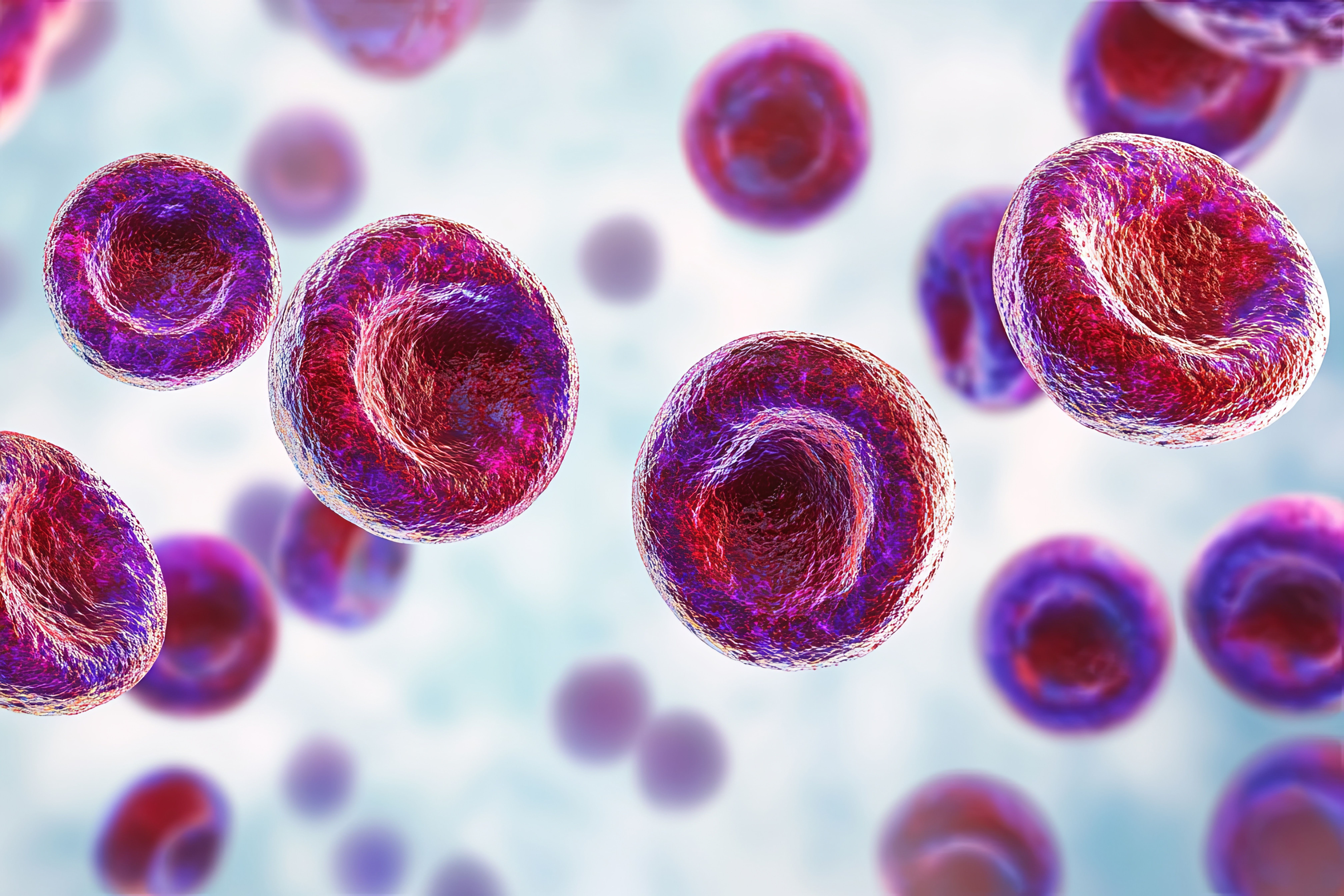News
Article
Transforming CLL Management With Emerging Prognostic Markers
Author(s):
This study provides a comprehensive review of both established and emerging prognostic markers in chronic lymphocytic leukemia (CLL), and their role in predicting disease, treatment response, and overall survival.
The findings of a study by University of Texas MD Anderson Cancer Center and Istituto di Ricovero e Cura a Carattere Scientifico (Meldola, Italy) researchers, published in Frontiers in Oncology, focus on the prognostic markers of chronic lymphocytic leukemia (CLL). This study details established and emerging markers and their role in predicting patient outcomes and guiding treatment strategies.1
The researchers aim to clarify the diverse prognostic factors influencing clinical outcomes among patients with CLL to better predict disease progression, treatment response, and overall survival (OS). CLL, the most common type of leukemia in Western countries, has a highly variable clinical course. The present study authors note, "The variability in disease course can make predicting disease prognosis a complicated process. This brings forth the importance of establishing prognostic models that can predict disease course, time to treatment, and survival outcomes in such a heterogenous disease."
Advances in next-generation sequencing had identified genetic markers with potential to offer additional prognostic information in the CLL space. | Image Credit: lucadp-stock.adobe.com

Next-generation sequencing has facilitated the discovery of new genetic markers that offer additional prognostic information. Mutations in the ATM, NOTCH1, and SF3B1 genes have been associated with CLL progression and therapy resistance. The ATM gene, located on chromosome 11q, plays a crucial role in DNA damage response, with its deletions linked to rapid disease progression and poor OS. ATM mutations are estimated to be prevalent in 25% of patients with CLL at diagnosis.2 NOTCH1 mutations are also significant, and are present in 4% to 10% of patients with CLL at the time of their diagnosis. These mutations are linked to a shorter time to first treatment and a higher risk of developing Richter syndrome. In addition, SF3B1 mutations, found in 10% to 17% of patients with CLL, are associated with shorter progression-free and treatment-free survival.
The study also provides insight into the role of microRNAs (miRNAs) and their expression profiles in CLL, with some being more commonly identified in low-risk disease, and others more prevalent with high-risk disease. Specific miRNAs, such as MiR-15a and MiR-16-1, have been associated with a shorter time from diagnosis to treatment, while MiR-34a has been associated with chemotherapy-refractory disease. MiR-29a and miR-29b overexpression leads to aggressive CLL, and MiR-129-2 methylation is associated with poor survival in CLL.3,4
Additionally, circulating microvesicles and serum cytokines such as tumor necrosis factor-α and interleukin-4 (IL-4) have a complex role in the immune system and CLL progression. A higher level of vascular endothelial growth factor, present in 17.6% of cases of CLL, correlates with an increased risk of disease progression in early-stage CLL. The authors suggest, "These findings support a potential use of microvesicles for diagnosis as well as for prognostication." It is known that T cells in patients with CLL produce higher levels of tumor necrosis factor-α and IL-4 than normal T cells and that elevated tumor necrosis factor-α is correlated with advanced Rai and Binet stage disease.
In addition to these emerging markers, the study also revisits traditional prognostic markers such as the Rai and Binet staging systems. These systems classify patients based on clinical characteristics and laboratory findings and have been fundamental in predicting survival and guiding treatment decisions since their development in the late 1970s and early 1980s. However, the study acknowledges the need for these staging systems to be integrated with more advanced prognostic markers to provide a comprehensive assessment.
The significance of lymphocyte doubling time, which measures the period required for lymphocytes to double in number, is also discussed. A lymphocyte doubling time of less than 12 months indicates a poor prognosis, while a longer time suggests a more indolent disease course. This marker remains a valuable predictor of disease progression and treatment initiation.
Serum markers like beta-2 microglobulin and thymidine kinase also correlate with disease progression and treatment response, with serum TK values above 48.5 U/L having a more rapid lymphocyte doubling time, shorter time to progression, and less response to both chemotherapy and targeted therapy. Elevated levels of beta-2 microglobulin (> 3.5 mg/L) are associated with shorter time to progression, lower rates of complete remission, and shorter OS when treated with frontline fludarabine-based chemo-immunotherapy compared with those with levels below 3.5 mg/L.
The authors conclude the newer prognostic markers should be utilized for a more individualized approach.
“These simple staging systems are still in use; however, several prognostic markers need to be added for an individualized assessment and, with the recent development of genomic techniques leading to better understanding of CLL at the molecular level, newer prognostic markers have emerged.”
References
1. Braish J, Cerchione C, Ferrajoli A. An overview of prognostic markers in patients with CLL. Front Oncol. 2024;14:1371057. doi:10.3389/fonc.2024.1371057
2. Rossi D, Gaidano G. ATM and chronic lymphocytic leukemia: mutations, and not only deletions, matter. Haematologica. 2012;97(1):5-8. doi:10.3324/haematol.2011.057109
3. Buhagiar A, Borg J, Ayers D. Overview of current microRNA biomarker signatures as potential diagnostic tools for leukaemic conditions. Noncoding RNA Res. 2020;5(1):22-26. doi:10.1016/j.ncrna.2020.02.001
4. Wong KY, Yim RL, Kwong YL, et al. Epigenetic inactivation of the MIR129-2 in hematological malignancies. J Hematol Oncol. 2013;6:16. doi:10.1186/1756-8722-6-16





